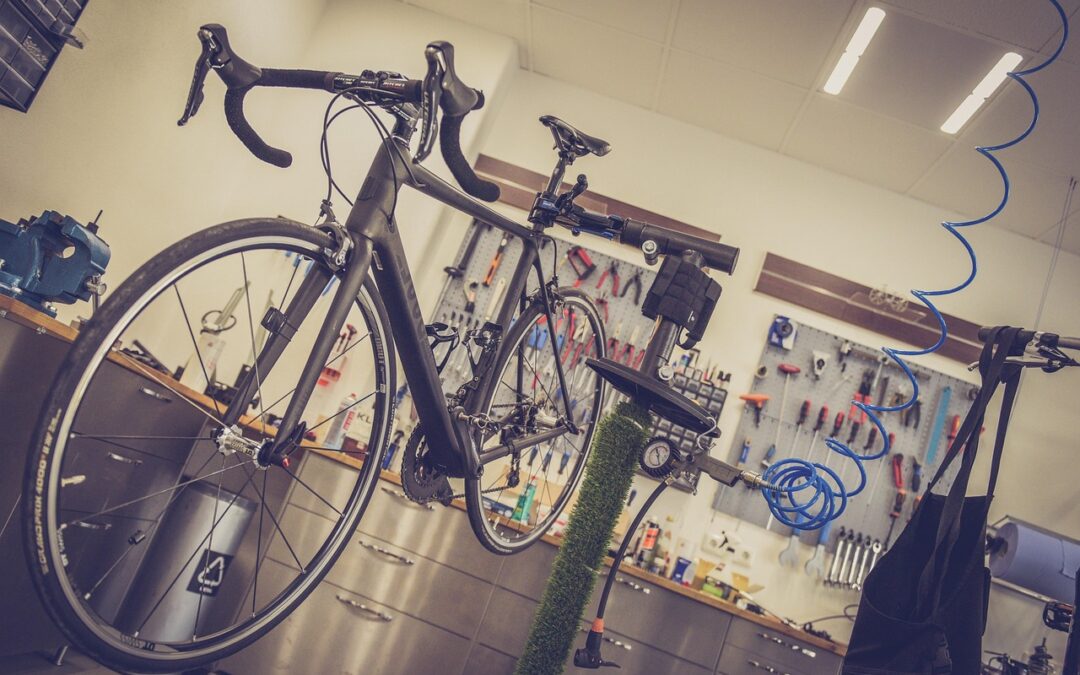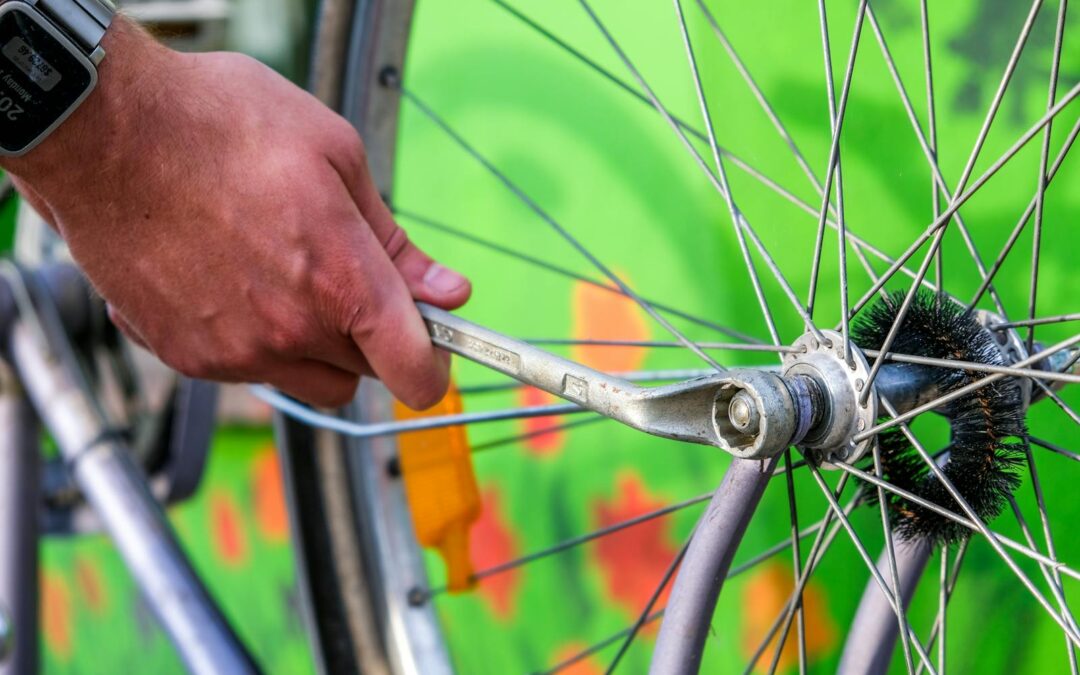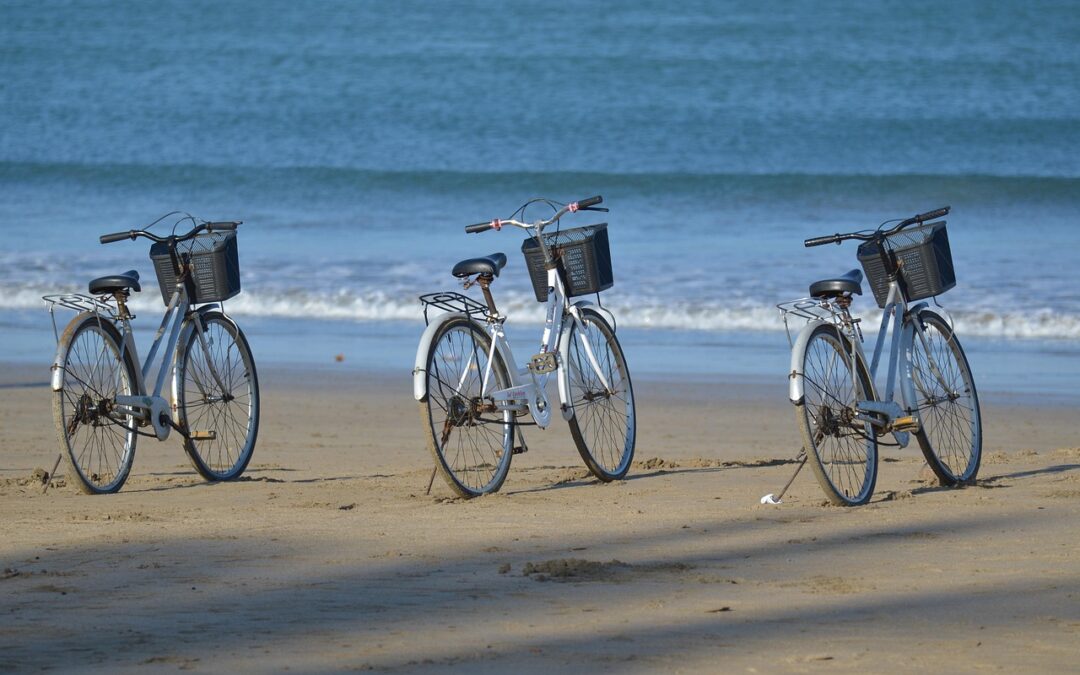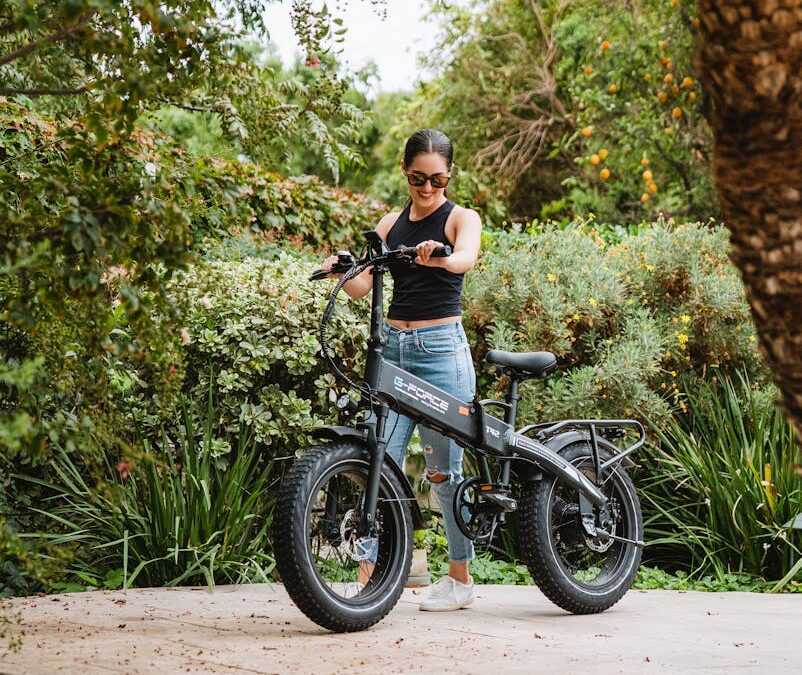Do you know how to ride a bike?
Riding a bike is a rite of passage for many young kids and a beloved hobby for adults. It is not only a great form of exercise, but it also offers a sense of independence and freedom. If you are new to the world of cycling, you may feel overwhelmed and intimidated. But fear not! With a little bit of practice and patience, you too can ride a bike like a pro. In this beginner’s guide, we will walk you through the basics of riding a bike as an adult, and offer some tips to make the experience of your bike ride enjoyable and safe.

Choose the Right Bike and Gear
Below we will highlight the most crucial bike gear you must have for your next adventure on two wheels.
Helmet: A helmet is a must-have for any bike ride, whether it’s a leisurely cruise or a high-speed race. It is your first line of defense against head injuries. Always ensure your helmet fits correctly and is snug around your head and chin. A helmet should sit flat on your head, and the strap should form a “V” shape under your ears.
Gloves: Cycling gloves serve two purposes: they provide a better grip on your handlebars, and they protect your hands in case of a fall. Quality gloves should have a comfortable fit, extra padding in the palm area, and breathable fabric to keep your hands dry.
Lights: Even during the day, it’s essential to have lights on your bike. Bike lights not only illuminate your path in low-light conditions, but they also make you more visible to motorists. Front and rear lights are the most crucial for safe riding, and you can opt for rechargeable models for convenience and sustainability.
Reflective Clothing: Just like lights, reflective clothing improves your visibility on the road and decreases your chances of accidents. Reflective jackets, vests, and pants are all excellent options- especially for early morning or late evening rides. When you wear this reflective gear and start riding, drivers can see you from a distance and have ample time to react.
Locks: If you plan on leaving your bike anywhere, whether it is at a store or outside your home, proper theft prevention is essential. Choose a sturdy lock– ideally, a U-lock- that can secure both your bike’s frame and pedal bike front tire to an immovable object. And while it may be tempting to leave your bike outside for a quick errand, always take your bike inside whenever possible.

How To Ride A Bike: Learn To Maintain Balance (Adult Training Wheels)
Riding a bike is a great way to stay fit, explore the outdoors, and have some fun. However, if you’re not confident in your balance bike riding can be a daunting experience. Whether you’re new to cycling or you’ve been riding for years, finding your balance on a bike can take some practice and patience. Luckily, there are some simple tips and tricks that can help you feel more stable and confident on your bike. Let’s explore some of the most effective ways to find your balance on a bike.
1. Proper Posture
Your posture plays a significant role in maintaining your balance when learning to ride a bike. You should sit up straight, engaging your core muscles to keep your body in a stable position. Your elbows should be slightly bent and relaxed, and your wrists should be straight to enhance your control of the handlebars. Keep your feet parallel to the ground and make sure that you’re pedaling smoothly in a straight line with your feet flat.
2. Staying Centered
One of the most common mistakes that cyclists make is to lean too far forward or backward when riding a steep hill. This can disrupt your balance and make it harder to control your bike. The key is to stay centered and balanced, keeping your weight evenly distributed over your bike. When you’re going downhill, shift your weight slightly backward to maintain your control.
3. Pick a Good Route
When you’re still learning to balance on a bike, it’s important to pick a route that’s suitable for your skill level. Look for a flat, traffic-free road or a parking lot. A good bike path or a quiet road with low traffic can be great options. As you gain more confidence, you can gradually explore more challenging routes.
4. Practice, Practice, Practice
Like with anything, this is a learning process and practice makes perfect. It’s essential to keep practicing your new skills and balance until it becomes second nature. Start by finding a quiet space where you can ride without any distractions. Then, gradually increase your speed and distance. If you’re struggling with a particular aspect of your balance, focus on that specific skill until you’re comfortable with it.
5. Find a Buddy
A great way to make learning to balance on a bike ride more enjoyable is to find a friend or family member to ride with you. Some bike shops also offer group classes. Not only can they provide you with encouragement and support, but they can also offer tips and feedback on how you a new rider can improve.

How To Ride A Bike: Practice Pedaling
Once you have mastered balancing, it’s time to learn how to pedal.
1. Correct Positioning:
The correct positioning is an essential element in cycling, and it plays a significant role in distributing the weight. While cycling, the saddle and bike should fit you well, and your feet, hips, and shoulder should align correctly. Put the saddle at the right height, so that when the pedal is at the bottom of its rotation, your knees need to show a slight bend. This way, you’re able to get the power stroke to initiate pedaling properly.
2. Use the Right Gears:
Knowing which gear to choose can make a significant difference when it comes to pedaling. Cycling is efficiently done by choosing the right gear. To achieve maximum results while pedaling, the pace should be 60-80 rotations per minute, and the gear should be adjusted depending on the terrain you are working with. The best way to determine which gear best suits you is to test it out. Start pedaling with low gear and adjust accordingly until your cycling feels comfortable ending with a smooth stopped position.
3. Proper Foot Placement:
Foot placement is another essential aspect when it comes to cycling. The balls of your feet should be strategically placed on the pedals, not the toes or the arch of other foot. Proper placement helps to support your feet and maintain balance. To make the ride more comfortable, make sure you’re not gripping the pedal too hard, and your foot placement should remain relaxed on the other pedal.
4. Strength Training:
Like any other exercise, cycling needs some form of strength training to achieve maximum effect. The muscles involved in cycling, such as quadriceps, hamstrings, calves, and glutes, need to be worked out too. In addition to that, include strength training in your workout routine- squats, lunges, and deadlifts are proven to enhance your cycling strength.
5. Patience is Key:
Lastly, cycling is not just about pedaling hard and fast, but it’s about building stamina and resilience. Cycling is a low-impact yet high-intensity activity, which means it can take time to gain strength, stamina, and endurance. Take it one step at a time, stick to a routine and gradually increase the intensity.

How to Ride a Bike: Learn to Steer and Brake
As you ride, you will need to steer and brake to avoid obstacles and stop the bike.
Step 1: Steer Your Bike
First, you need to make sure that you have a good grip on the handlebars of your bike and that you’re sitting in a comfortable position. To steer your bike, you need to shift your weight to the side you want to turn. This will give enough momentum to cause your bike to lean in that direction, and you can use your handlebars to guide the bike through the turn. Remember to keep your eyes on the road ahead of you, not on your front wheel.
Step 2: Brake Your Bike
Braking is an essential skill that you need to master to stay safe on the road. To brake your bike, you need to apply pressure on the brake levers located on the handlebars. You should use both brakes at the same time to avoid skidding. If you need to brake suddenly, apply more pressure on the rear brake than the front brake. This will prevent your bike from flipping over. Don’t forget to pay attention to road signs and other cyclists around you.
Braking on Downhill
When you’re going downhill, it’s important to use your brakes carefully to avoid losing control of your bike. You should feather your brakes gently to maintain a safe speed and avoid skidding. If you find yourself going too fast, shift your weight backward and apply more pressure on the rear brake with one foot instead of being in a down position. This will help you slow down without losing control with enough speed.
Braking in Wet Conditions
Braking in wet conditions can be challenging, as your bike’s brakes can be less effective on wet surfaces. Try to avoid riding in the rain. To avoid skidding when braking in the rain, you should brake gently and gradually apply pressure on one foot to the brakes. You should also try to avoid sudden turns or stops and maintain a safe speed when on wet roads.
Riding a bike is a fun, healthy and environmentally friendly way to get around. Whether you are a beginner cyclist or an experienced rider, it’s important to follow these basic tips to ensure a safe and enjoyable ride. Remember to choose the right bike and gear, practice balancing and pedaling, learn to steer and brake, and ride defensively. With a little bit of practice and patience, you will be riding like a pro in no time!
Don’t forget to find the right bike for you!
Your local bike shop- Myrtle Beach Bicycles will help you pick the perfect fit for you!







